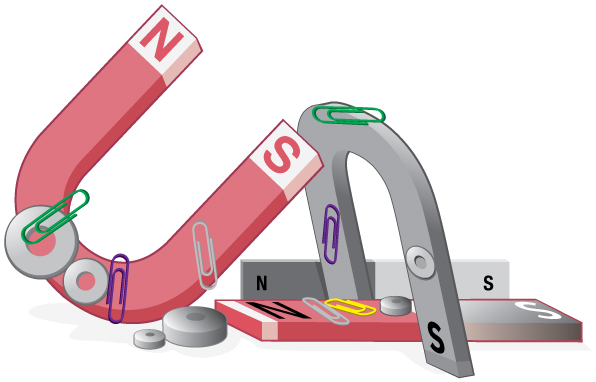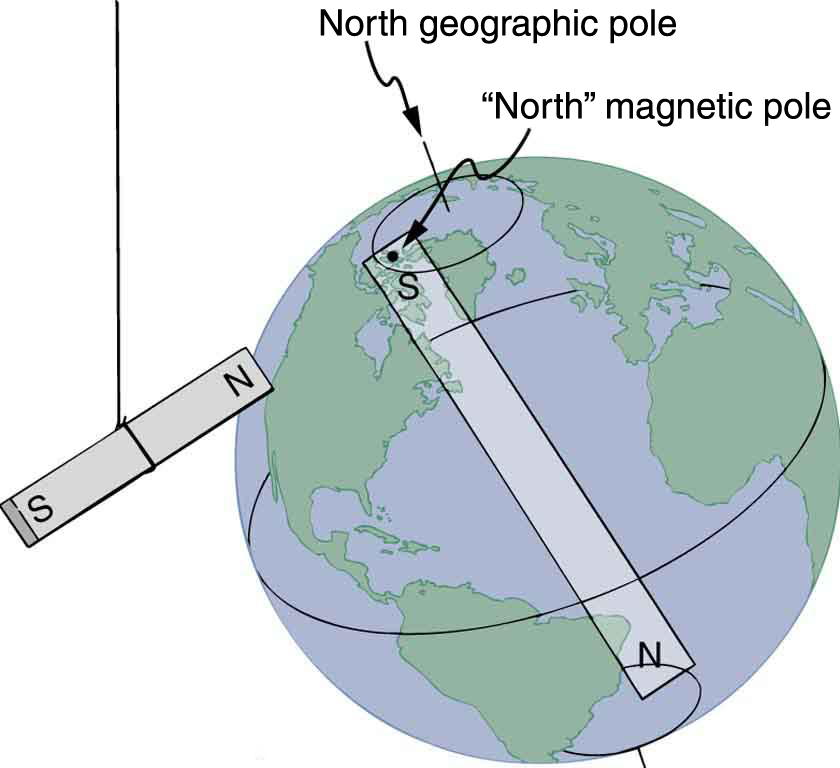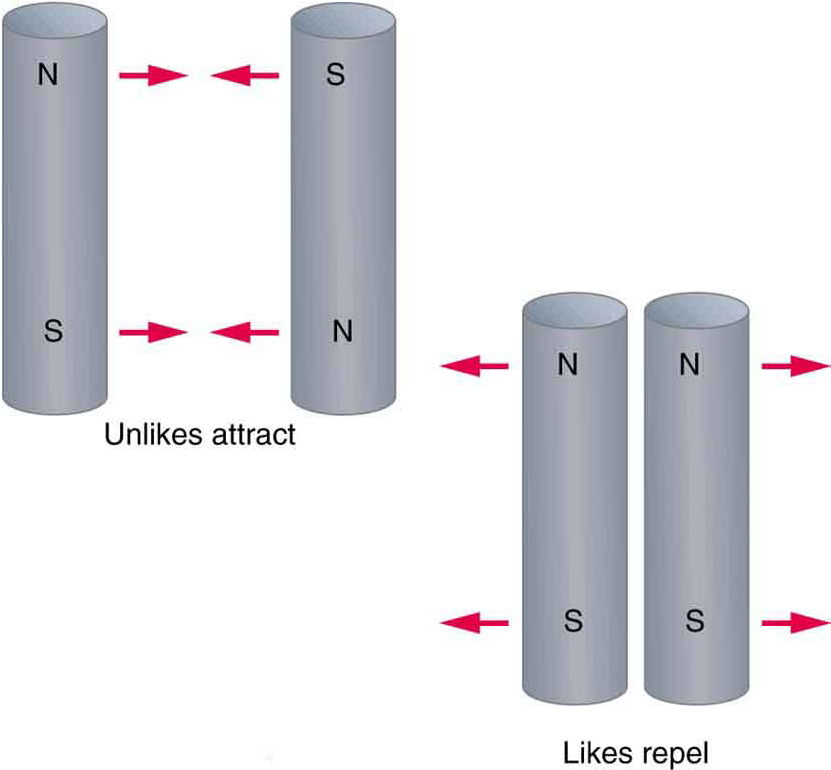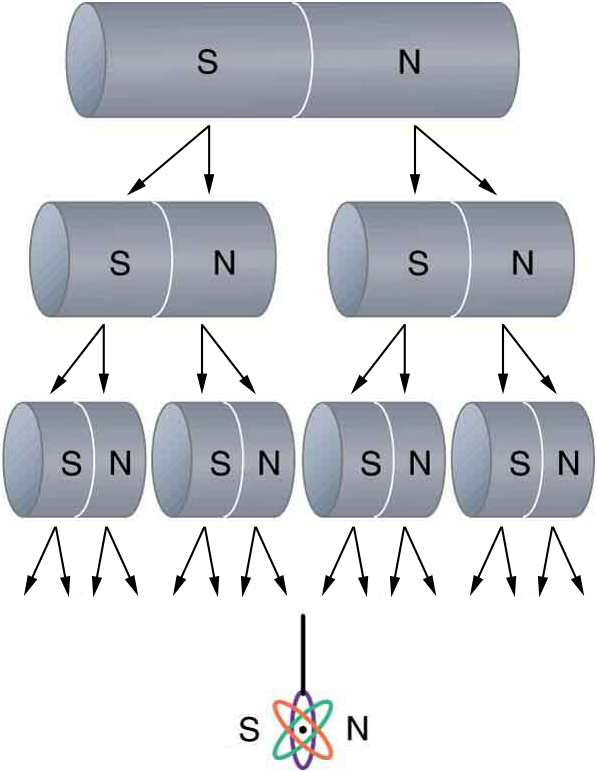| << Chapter < Page | Chapter >> Page > |
By the end of this section, you will be able to:

All magnets attract iron, such as that in a refrigerator door. However, magnets may attract or repel other magnets. Experimentation shows that all magnets have two poles. If freely suspended, one pole will point toward the north. The two poles are thus named the north magnetic pole and the south magnetic pole (or more properly, north-seeking and south-seeking poles, for the attractions in those directions).
It is a universal characteristic of all magnets that like poles repel and unlike poles attract . (Note the similarity with electrostatics: unlike charges attract and like charges repel.)
Further experimentation shows that it is impossible to separate north and south poles in the manner that + and − charges can be separated.

The Earth acts like a very large bar magnet with its south-seeking pole near the geographic North Pole. That is why the north pole of your compass is attracted toward the geographic north pole of the Earth—because the magnetic pole that is near the geographic North Pole is actually a south magnetic pole! Confusion arises because the geographic term “North Pole” has come to be used (incorrectly) for the magnetic pole that is near the North Pole. Thus, “North magnetic pole” is actually a misnomer—it should be called the South magnetic pole.


[link] shows that no matter how many times you divide a magnet the resulting objects are always magnetic dipoles. Formally, a magnetic dipole is an object (usually very small) with a north and south magnetic pole. Magnetic dipoles have a vector property called magnetic momentum. The magnitude of this vector is equal to the strength of its poles and the distance between the poles, and the direction points from the south pole to the north pole.
A magnetic dipole can also be thought of as a very small closed current loop. There is no way to isolate north and south magnetic poles like you can isolate positive and negative charges. Another way of saying this is that magnetic fields of a magnetic object always make closed loops, starting at a north pole and ending at a south pole.
With a positive charge, you might imagine drawing a spherical surface enclosing that charge, and there would be a net flux of electric field lines flowing outward through that surface. In fact, Gauss’s law states that the electric flux through a surface is proportional to the amount of charge enclosed.
With a magnetic object, every surface you can imagine that encloses all or part of the magnet ultimately has zero net flux of magnetic field lines flowing through the surface. Just as many outward-flowing lines from the north pole of the magnet pass through the surface as inward-flowing lines from the south pole of the magnet.
Some physicists have theorized that magnetic monopoles exist. These would be isolated magnetic “charges” that would only generate field lines that flow outward or inward (not loops). Despite many searches, we have yet to experimentally verify the existence of magnetic monopoles.
The fact that magnetic poles always occur in pairs of north and south is true from the very large scale—for example, sunspots always occur in pairs that are north and south magnetic poles—all the way down to the very small scale. Magnetic atoms have both a north pole and a south pole, as do many types of subatomic particles, such as electrons, protons, and neutrons.
We know that like magnetic poles repel and unlike poles attract. See if you can show this for two refrigerator magnets. Will the magnets stick if you turn them over? Why do they stick to the door anyway? What can you say about the magnetic properties of the door next to the magnet? Do refrigerator magnets stick to metal or plastic spoons? Do they stick to all types of metal?
Volcanic and other such activity at the mid-Atlantic ridge extrudes material to fill the gap between separating tectonic plates associated with continental drift. The magnetization of rocks is found to reverse in a coordinated manner with distance from the ridge. What does this imply about the Earth’s magnetic field and how could the knowledge of the spreading rate be used to give its historical record?

Notification Switch
Would you like to follow the 'College physics for ap® courses' conversation and receive update notifications?